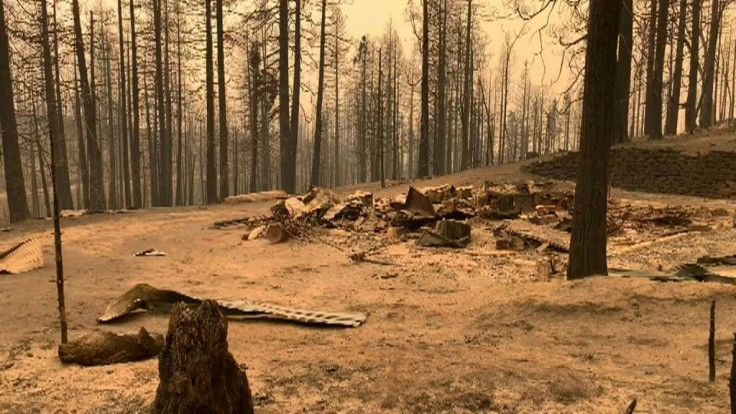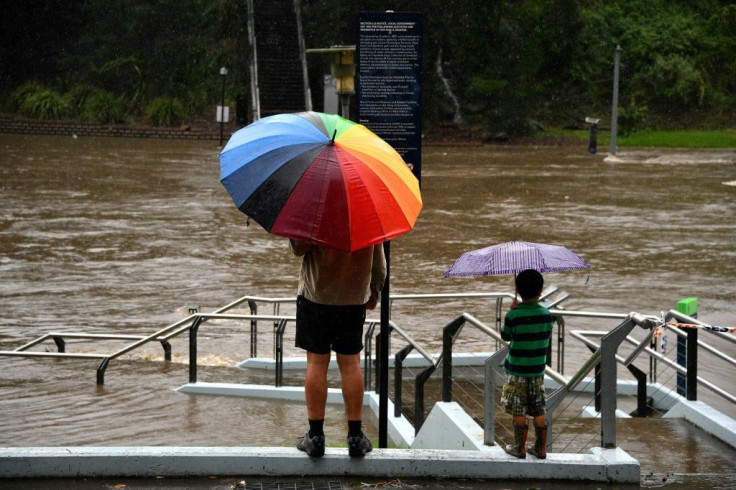Flash Floods Feared As Thunderstorms Head Toward US West Ravaged By Wildfires

KEY POINTS
- Flash floods and heavy rain could douse some fires but could also trigger dangerous conditions
- Mudslides blocked part of Interstate 70 in Colorado over the weekend
- There are also fears of lightning igniting more fires across already affected states
Some Western states, already battered by raging wildfires that have been burning for weeks, are now facing warnings of potential flash flooding from thunderstorms heading their way.
The National Weather Service (NWS) said “heavy rainfall from monsoonal activity will continue the potential for flash flooding,” adding that while flash floods may help douse some of the fires, California, which is suffering through drought, may not see relief, USA Today reported.
So far, these states have been placed under a flood watch as thunderstorms make their way to the west: Montana, New Mexico, Washington, Utah, some parts of Nevada, Idaho, and Colorado, as the United States goes through its most active monsoon season in the last six years. The NWS in Spokane, Washington, warned of a thunderstorm west of the city late Sunday. The local unit said residents who experience flooding should contact NWS.
Monsoon moisture & flash flood threats persist from the Inter-mountain West to the South Plains. Strong to severe storms with locally heavy rain also possible for parts of the South to the Northeast. Lightning may produce new fires in parts of CA/OR. Heat continues in the South. pic.twitter.com/mZg2gPpaFa
— National Weather Service (@NWS) August 1, 2021
The latest forecasts indicated that gust winds from 20-30 mph are expected out of the West. In Montana, there will only be a slight chance of thunderstorms Monday, but come Tuesday, it is expected to be mostly cloudy, CBS affiliate KRTV reported. There is also a chance of thunderstorms or afternoon rain across central and western Montana.
The first signs of potential flash flooding were felt Sunday, when Interstate 70 passing through Colorado’s Glenwood Canyon had to be closed down after multiple landslides; dozens of drivers were caught in the mud and debris and had to be rescued. Boulders and logs blocked the highway, a major transportation corridor between the Rocky Mountains and the West Coast, in both directions. The Colorado Department of Transportation said the highway has suffered "extreme damage." The highway will remain closed for the foreseeable future, reports said.
Areas where wildfires have stripped the land of the cover of vegetation are especially prone to mudslides. The National Interagency Fire Center (NIFC) said Sunday that seven new large fires have been ignited, bringing the country’s total active fires to 91, CNN reported.
Compared to last year's 32,059 fires that burned 2.1 million acres, the U.S. has seen 37,803 fires so far this year, with more than 3 million acres burned across different states. More than 22,000 firefighters have been deployed across the country to battle the wildfires.
Oregon has recorded the most acres burned of all affected states, with 554,587 acres scorched by wildfires, including the massive Bootleg Fire that has burned more than 413,000 acres. Idaho has recorded the most number of large fires: 23.
The Bootleg Fire in southern Oregon, the country's largest active blaze, could reach full containment in October. Until then, officials say, wildfire conditions will only continue to intensify. https://t.co/8DkDYiAjTp
— NPR (@NPR) August 1, 2021
Minnesota also set two record highs for the worst air quality, late last week, prompting talks about how climate change has affected U.S. air quality and weather as a whole. President Joe Biden said in a virtual meeting Friday that the current wildfire situation in the country “is a challenge that demands our urgent, urgent action.”
Monsoon rains are expected to help firefighters in battling the blazes, but some experts warned of potential dangerous conditions such as the mudslides at Interstate 70. There is also fear that the thunderstorms would trigger new fires due to lightning.

© Copyright IBTimes 2024. All rights reserved.






















